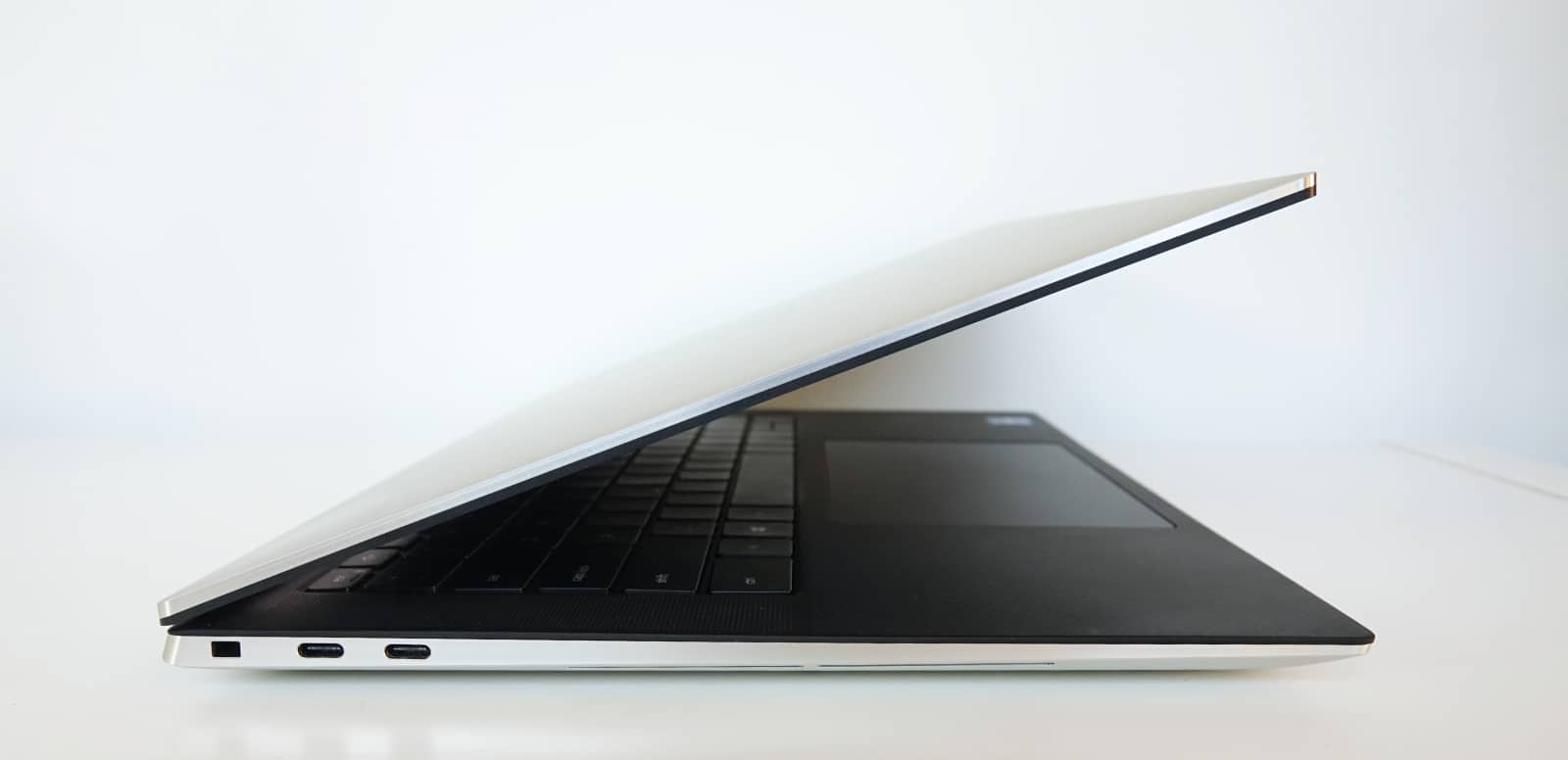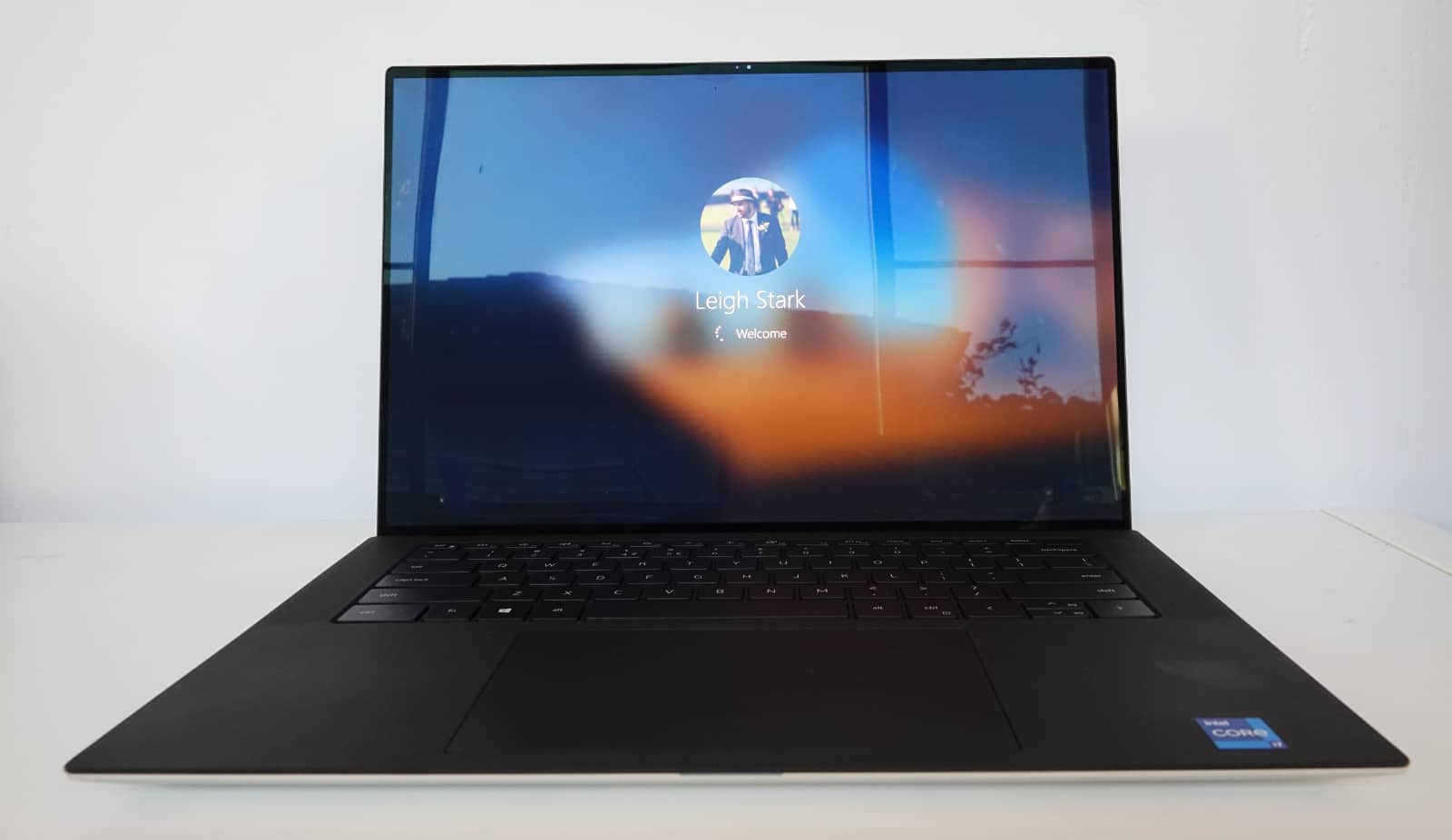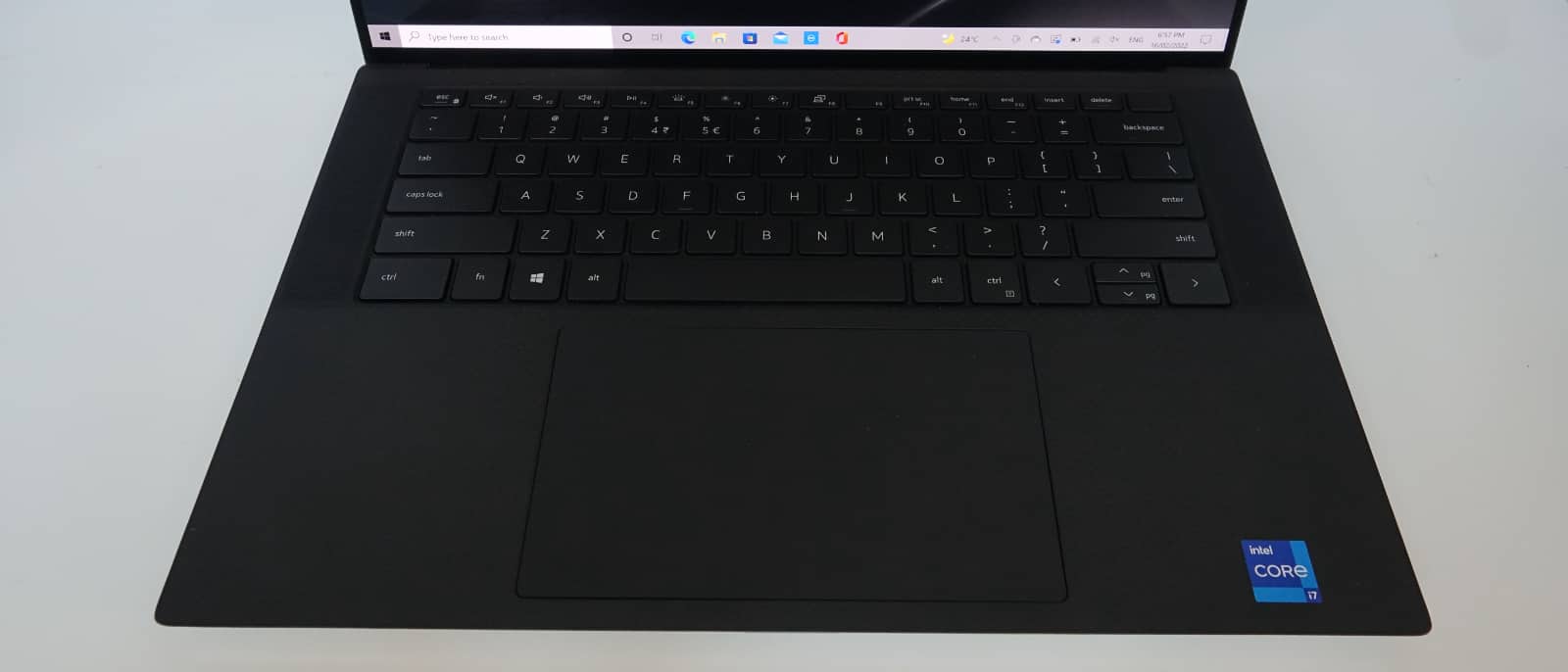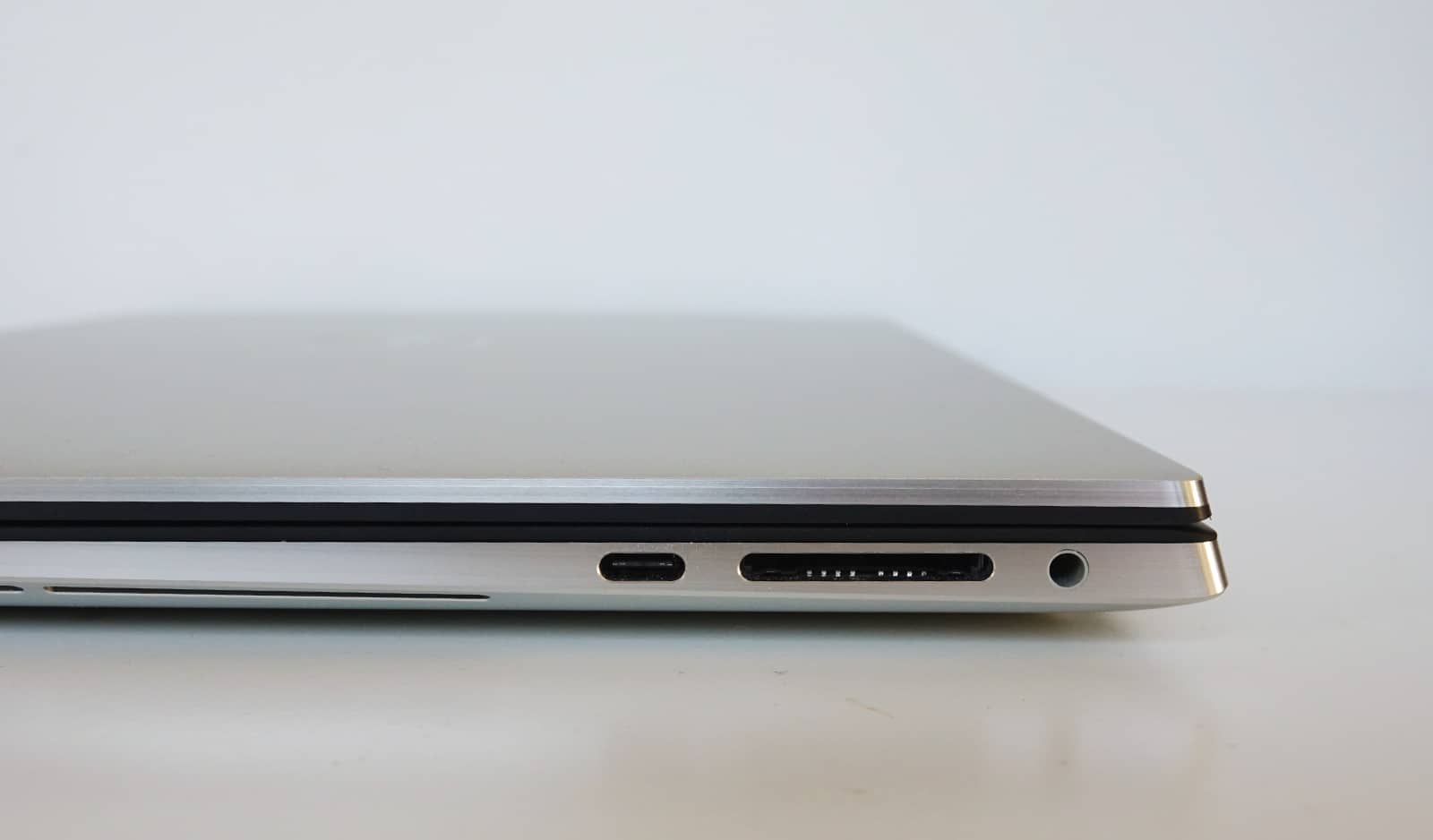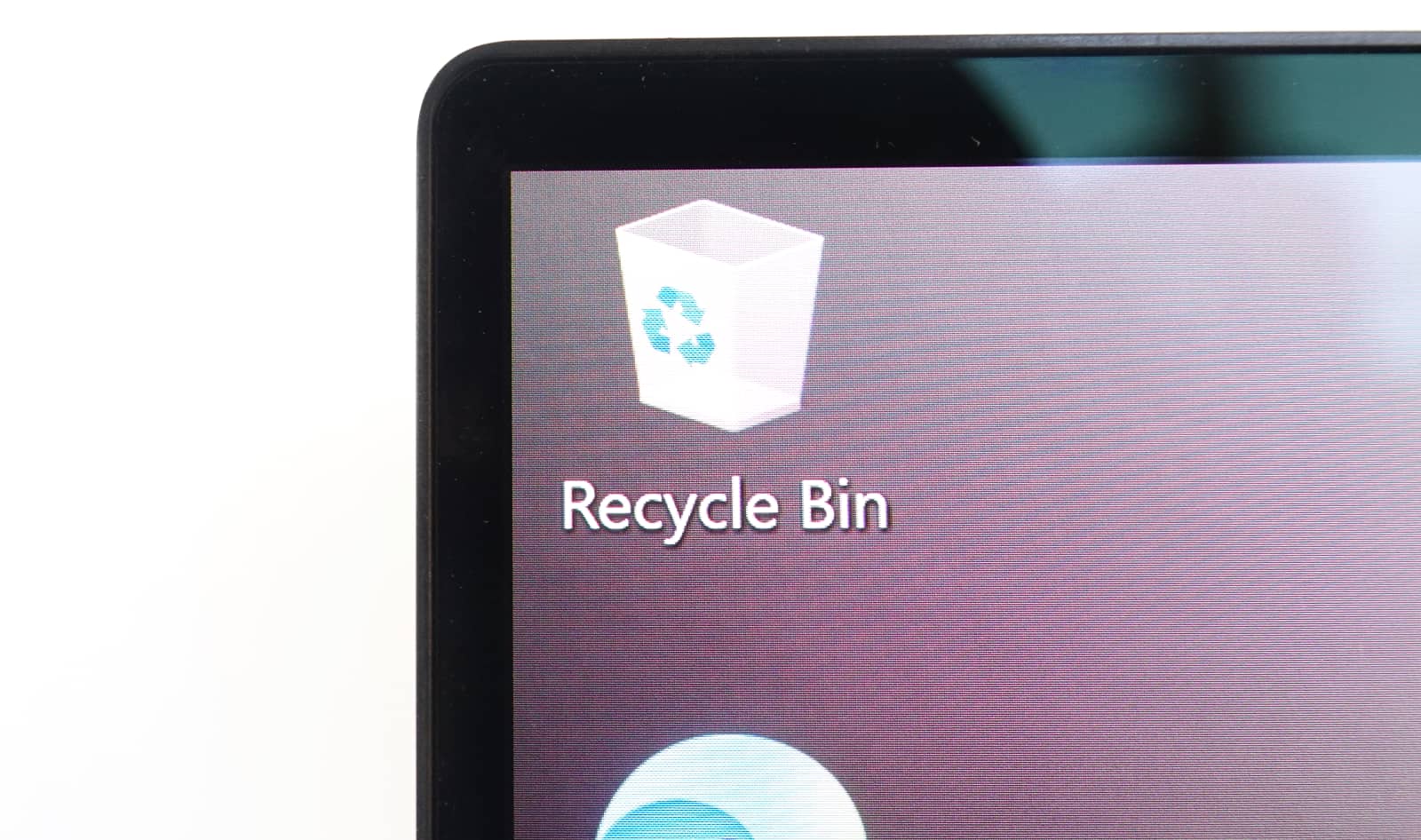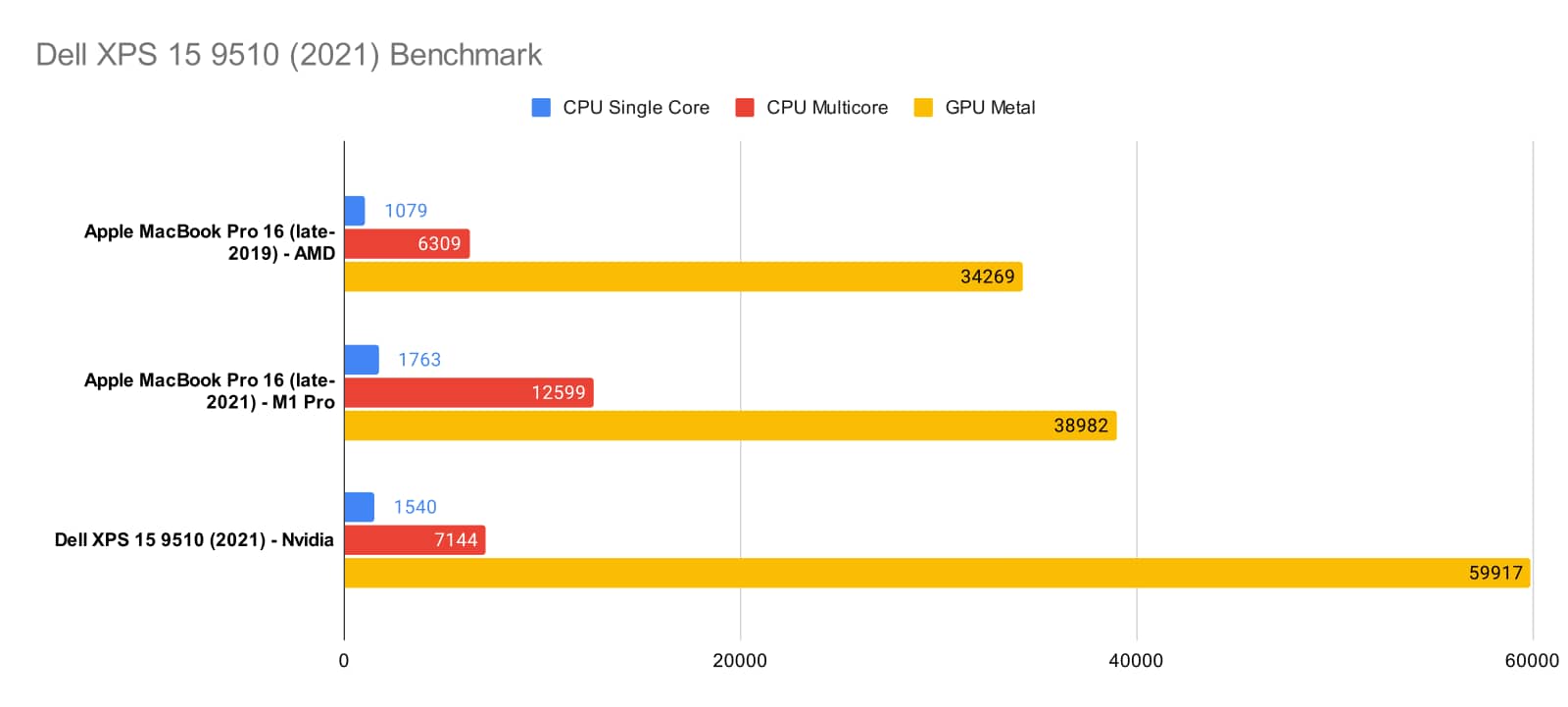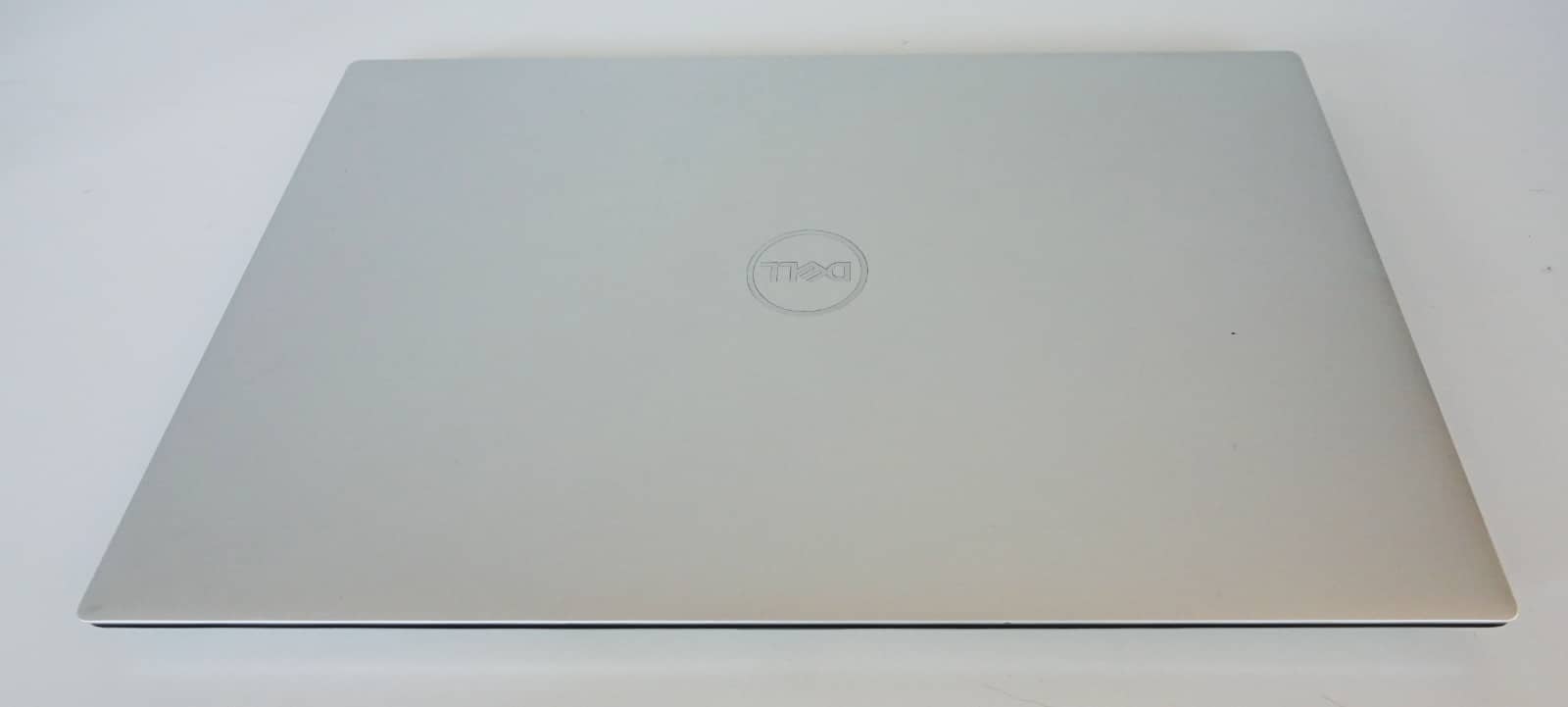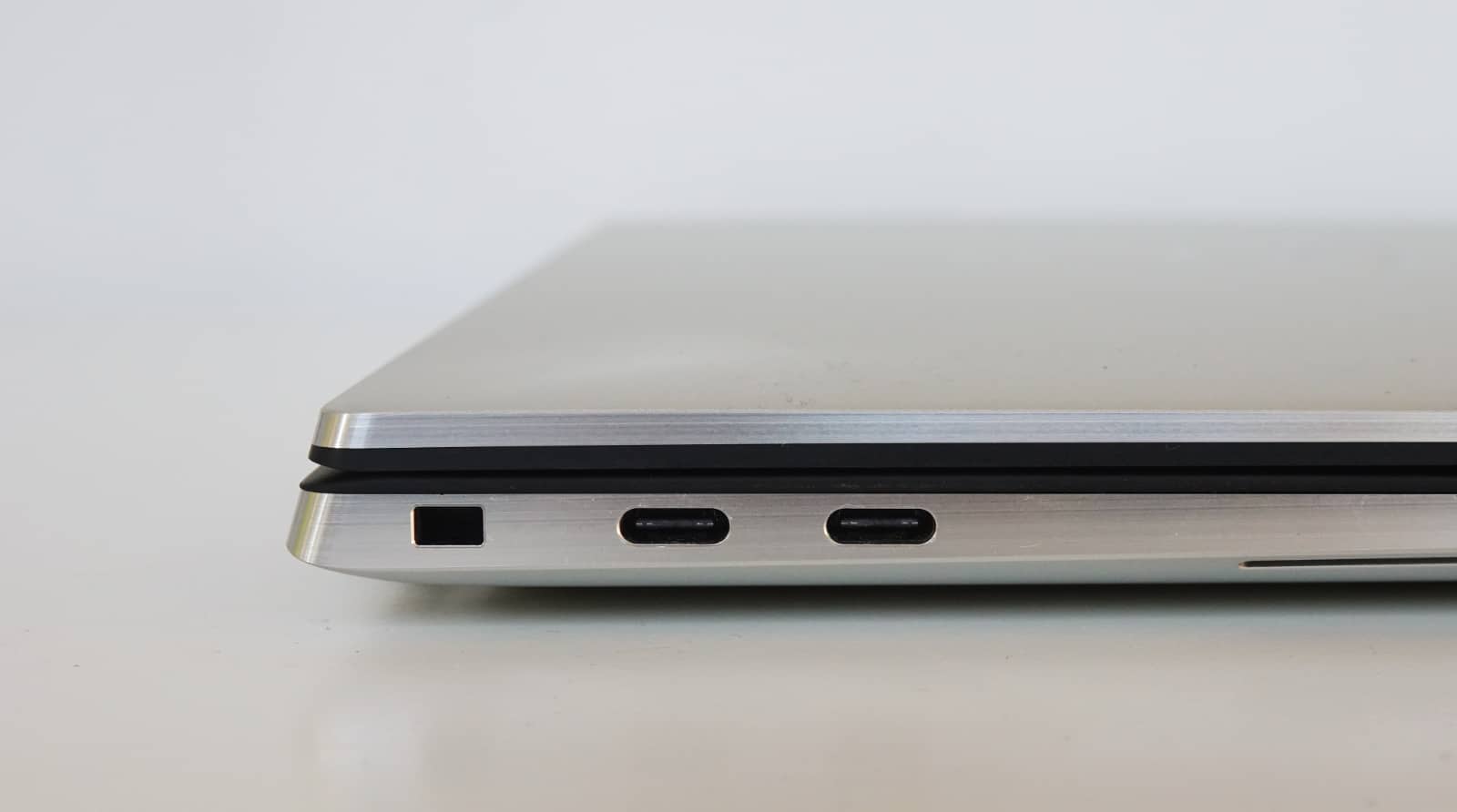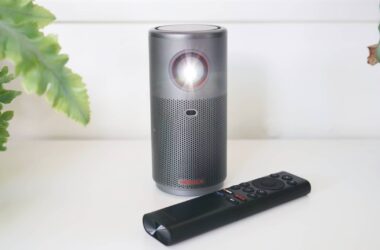Quick review
The good
The not-so-good
It’s not only Apple that makes a big and swanky laptop for creators, as the Dell XPS 15 9510 shows us, a lovely computer complete with an OLED screen.
Picking a laptop can be very difficult in today’s world, thanks in part to how much choice there is to pick from. Competition is always a great thing, don’t get us wrong, but it can make decisions that much more interesting, especially when there are so many great choices to make.
In the world of big laptops, that decision gets interesting. You can choose big and cheap, an area often left for budgets and students (which are often the same thing), and you can choose big and powerful.
While 13 inch laptops tend to be that perfect middle ground for most people commuting (or these days, working from home), 15 inch computers are often seen as the biggest you might want to go while keeping things portable. Choose a bigger computer, a 17 incher, and you’re probably going to leave that machine on the desk, never to be taken out into the real world. But keep things to a maximum of 15, and it’s still portable, offering more space inside for more power and battery life.
That’s pretty much where Dell’s latest take on its flagship XPS range is pitched, in the XPS 15 OLED, a slightly bigger variation on a theme most known in the 13 inch XPS 13, but can be found with a larger screen and plenty of power in its 15 inch take.
Dell makes it for workstations in a “Precision” style, as well, but right now, we’re checking the XPS edition, which arrives with about as much as a PC owner could possibly want. Almost.
Design
Arriving in a familiar design started by the XPS models we saw years ago, the XPS 15 OLED is basically a bigger XPS, complete with the carbon fibre interior and aluminium exterior. A combination of black and silver, it’s a swanky laptop with a sleek line as it forms angles down the side, and a great looking machine, to boot.
While a little on the big side, Dell has made this 15 inch computer as small as a 15 inch could possibly be, thanks in part to the screen, which has impossibly thin bezels that keep a lovely OLED screen in place.
With a bezel measuring around 4mm on the left and the right, Dell’s 15 inch OLED is almost edge-to-edge, and the screen practically bleeds off into the real world. It’s a lovely look, and one that fits right in with the professional style exhibited by the carbon fibre and metal body, and easier on the eyes even than the 15 inch XPS 2-in-1 we saw back in 2019.
Features
There’s more going on than just the 15 inch OLED screen, though that’s clearly a big part of the package, delivering more than Full HD, too. You’ll find a 3.5K resolution on the XPS 15 9510, running a resolution of 3456×2160, which is not quite 4K, but still pretty awesome, and means details on the 15 inch screen are sharp, while the OLED display offers plenty of punch for colours, as well.
Under the hood of this 15 inch computer, there’s a relatively meaty set of specs, with an Intel 11th-gen Core i7 (i7-11800H) paired with 16GB RAM, plus a 512GB SSD and pretty much all the fix-ins, with Bluetooth 5.1, WiFi 6, and Corning’s scratch-resistant Gorilla Glass 6 covering the screen, which just so happens to be a touchscreen. There’s a webcam, four speakers, two microphones, a backlit keyboard, a fingerprint sensor, and a big keyboard with a massive trackpad underneath, as well.
And there’s even a dedicated graphics chip underneath, too. Lurking under the hood and there for you to use it, Dell has provided an Nvidia GeForce RTX 3050 Ti with 4GB RAM, which should deliver performance for both gamers and content creators, and even folks who might have a VR or mixed reality headset to plug right in.
You’ll also find a few ports on the side, with the left edge offering two Type C Thunderbolt 4 ports for data, display, and powering the computer, while the right edge provides a 3.5mm headset jack, full-side SD card slot, and a USB Type C port capable of data and charging the machine, as well.
Display
Specs aside, one of the standout features is the display, which is just genuinely lovely.
Provided you opt for the 3.5K OLED variety — because you can get Full HD and 4K LCD screens in the XPS 9510 — you’ll find a beautifully sharp and vibrant 15.6 inch screen that pops visuals off the screen.
The frame is delightfully slim, so much that if Dell managed to get the edges any closer, the picture would blend right into the fabric of space and time, and the quality of what you look at just stands out, too. It’s one of the nicest laptop screens we’ve seen before, and while the resolution isn’t quite 4K, the curious 3456×2160 is still massive enough to make a dent, making it ideal for most apps you’re going to work through.
It’s no wonder that Dell calls this the “InfinityEdge”, because it’s like visuals just pop into infinity when being used. Sweet.
In-use
Using the XPS 9510, you’ll find a full-size keyboard thanks to the larger body of the 15.6 inch laptop, plus one of the biggest trackpads we’ve ever put our fingers on.
Easily taking up half the width of the keyboard, using the Dell XPS 15 is a cinch with that big mouse, and if you still can’t get what you need done, there’s also the screen, which is a touchscreen, as well. Granted, there’s no 360 degree hybrid hinge in this laptop, so you won’t be using the OLED display as a massive tablet of sorts, but you also don’t need it. Essentially, if the trackpad isn’t working for your in-use experience, you can switch to touching and prodding the screen, and getting your fingerprints all over it.
There’s also the keyboard, which is a little on the shallow side, but still comfortable to type on. We’re not sure if it’s the same MagLev keyboards Dell used to use in its XPS 15 models, but the keyboard is comfortable to use, all the same, and almost as good as what we’ve seen from Lenovo in the past.
Sufficed to say, it was easily comfortable for writing this review on, which we definitely did.
Performance
We did more than write a review on the XPS 15, though. A little bit more, thanks in part to the guts of what’s under the hood.
Dell’s choice of an Intel Core i7 keeps the performance peppy, as does the inclusion of 16GB RAM and a decent Nvidia GPU, with only Windows really getting in the way of itself as Windows can often do.
Overall, we found the system to be quite strong, and while the M1 Pro 16 inch MacBook Pro equivalent seemed to offer slightly more power, benchmarks showed the system was certainly no slouch.
As such, the only hiccups we found were the occasional slowdown, something every computer can succumb to, though it wasn’t often. For the most part, the XPS 15 9510 performed like a dream, with plenty of power waiting for you to exploit.
Battery
The battery is a different matter altogether.
Granted, it will depend entirely on how you use the machine, but we found the XPS 15’s battery life to hit 6 to 8 hours typically, rarely going beyond it.
That isn’t stellar battery life for a big computer, especially these days when 12 to 15 hours are becoming the norm for flagship machines with big screens and massive batteries underneath.
You may end up doing better in battery performance than we did, though to squeeze that life out, but it’s a little hit and miss here on the battery side of things.
Value
Yet with a price of $4299 in Australia, the XPS 15 won’t be a convincing argument for everyone.
Priced like a workstation or a high-end gaming system, the XPS 15 wedges itself somewhere as both, making it a slim and powerful beast without the obvious look of one.
This computer is beautiful and performs wonderfully, too. It’s a real treat and a stunner in the PC laptop world.
It just also happens to cost a pretty penny.
What needs work?
Yes, the price is a little on the high side, and depending on what you plan to use the XPS 15 for, it can feel a little overvalued at times.
To Dell’s credit, the specs and design help to make the XPS 15 9510 stand out in a big way. For a little over $4K (or much less if you wait for one of Dell’s regular sales), the XPS 15 offers a sleek and swanky metal and carbon fibre design, beautiful display, high-end hardware, all in a Windows machine that screams power.
This is a lovely machine, ideal for the folks who not only want to get work done, but also might want to game a little later.
But the battery life could be a bit better, and we wish there was at least one more port to work with.
Compare the XPS 15 to other 15 inch laptops, and you’re typically looking at four ports on the machine, be it four Type C ports or a mixture of Type C and the standard rectangular Type A ports. It’s pretty easy.
Here on the XPS 15, you’ll find three Type C Thunderbolt ports, an SD card slot, and a headset jack, and it honestly feels like Dell needs at least one more port. It could be an HDMI 2 or full-size Type A port — frankly, we’d settle for another Type C — but it just feels a little under where it should be.
The loss of one port isn’t a staggering loss, mind you, just a minor one. It’s the sort of complaint we’d have if we needed to plug more things in. Once you realise you’re plugging in power and external display, you’re down to one port left, kind of forcing your hand, as Dell reaches in and asks you to buy a monitor with either daisy-chained power or a port replicator, or both.
Four ports would have made the XPS 15 more complete. It’s a minor complaint, but a complaint all the same.
The battery is a more critical issue, truth be told.
Dell says you should be able to hit up to 13 hours and 20 minutes on the XPS 15, but offers that expectation on the Full HD+ model, with the only other guide to being the computer’s watt hour rating (the 9510 offers a 6-cell 86WHr battery). However, Dell doesn’t go as far to rate its OLED edition of the XPS 15, which includes a higher resolution screen, something that could easily affect battery life.
As such, it’s hard to say how long the Dell XPS 15 9510 OLED is supposed to run for, but our guess is not quite the 13 of its Full HD+ sibling, and that means our runtime of around 8 hours is probably right on cue. And unfortunately, it’s just not good enough.
While the computer is absolutely lovely, we really want more. You might be able to hit 10 if you pulled back on usage and left this thing to productivity only, but when Apple’s 16 inch MacBook Pro is spoiling us with a maximum of 20 hours — and just as much performance — we’re sitting here wondering how half of that is really achieving a victory for laptops.
You could probably live with the battery life as it is all the same, especially in a WFH world, tethered to the desk for most of the work-day and disconnected some of the time, as well. And if things start to return, you could probably take it in and survive much of an 8 hour work day without the charger. But you should keep it with you just in case, because you’ll probably need it just in case.
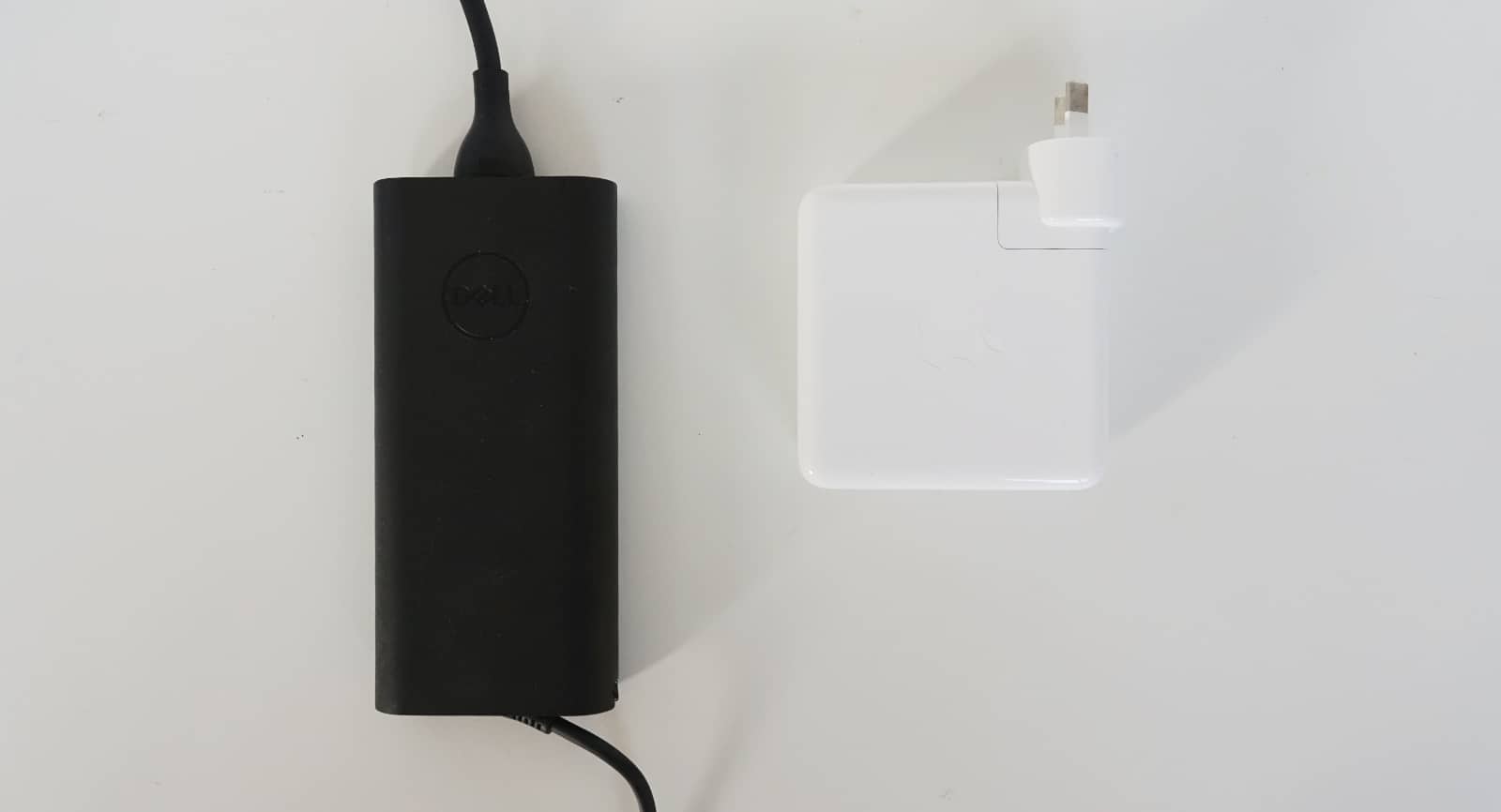
Not helping Dell is that battery charging brick, which is pretty big and gets properly warm, too.
Technologies to get the size down aren’t exactly new, and it feels like Dell could have made a more compact brick with a compact charging connector. Unfortunately, it’s still the same brick with a long three prong cable out of it. That’s fine, we guess, but if Dell can do a great job designing a great computer, it can definitely give the battery pack a once over, as well.
Final thoughts (TLDR)
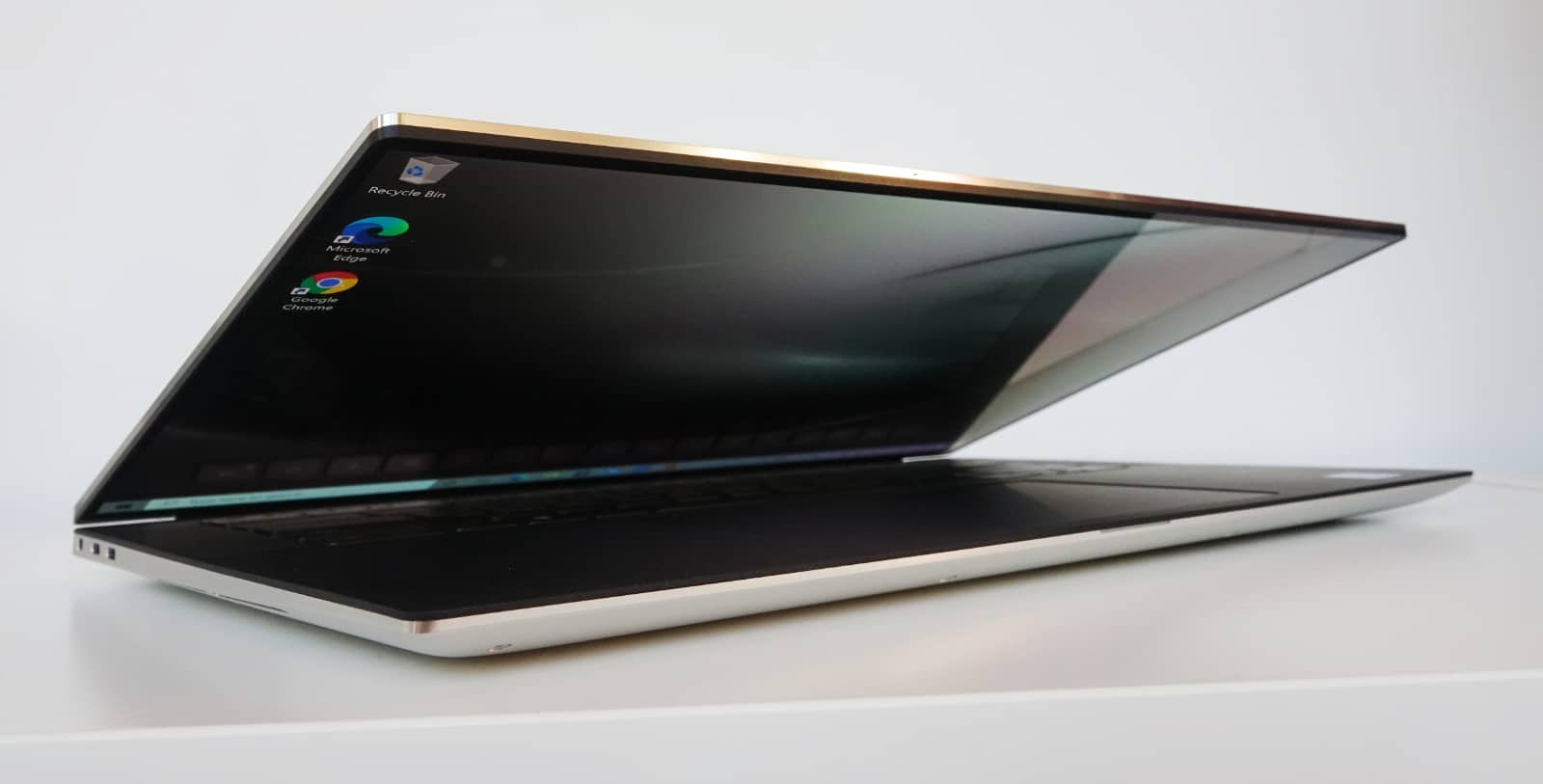
If you can get over the battery life and resign yourself to the knowledge that you’ll need to keep the charge pack with you in your bag, the XPS 15 OLED is one of the nicest large laptops a PC owner could want today.
It’s big and beautiful, and a brilliant little performer at that. Between the excellent specs and speed, plus the lovely design and screen, the XPS 15 OLED is a winner, smashing it out of the park in nearly every area. Recommended.




